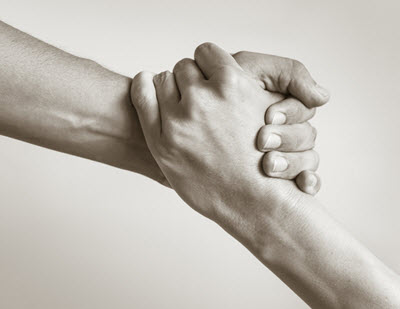[et_pb_section fb_built=”1″ fullwidth=”on” module_class=”inside-hero-img” _builder_version=”3.22″][et_pb_fullwidth_image src=”https://michaelas-counseling.com/wp-content/uploads/2019/07/hero-image-abandonment.jpg” _builder_version=”3.19.15″][/et_pb_fullwidth_image][/et_pb_section][et_pb_section fb_built=”1″ module_class=”heading-section” _builder_version=”3.22″][et_pb_row _builder_version=”3.25″ background_size=”initial” background_position=”top_left” background_repeat=”repeat”][et_pb_column type=”4_4″ _builder_version=”3.0.47″ custom_padding=”|||” custom_padding__hover=”|||”][et_pb_text admin_label=”Page Title” _builder_version=”3.27.4″]
Abandonment Despair
[/et_pb_text][/et_pb_column][/et_pb_row][/et_pb_section][et_pb_section fb_built=”1″ _builder_version=”3.22″ custom_padding=”0px||0px|”][et_pb_row _builder_version=”3.25″ background_size=”initial” background_position=”top_left” background_repeat=”repeat”][et_pb_column type=”4_4″ _builder_version=”3.0.47″ custom_padding=”|||” custom_padding__hover=”|||”][et_pb_text admin_label=”Emotional Flashbacks to Abandonment” _builder_version=”3.27.4″ z_index_tablet=”500″ text_text_shadow_horizontal_length_tablet=”0px” text_text_shadow_vertical_length_tablet=”0px” text_text_shadow_blur_strength_tablet=”1px” link_text_shadow_horizontal_length_tablet=”0px” link_text_shadow_vertical_length_tablet=”0px” link_text_shadow_blur_strength_tablet=”1px” ul_text_shadow_horizontal_length_tablet=”0px” ul_text_shadow_vertical_length_tablet=”0px” ul_text_shadow_blur_strength_tablet=”1px” ol_text_shadow_horizontal_length_tablet=”0px” ol_text_shadow_vertical_length_tablet=”0px” ol_text_shadow_blur_strength_tablet=”1px” quote_text_shadow_horizontal_length_tablet=”0px” quote_text_shadow_vertical_length_tablet=”0px” quote_text_shadow_blur_strength_tablet=”1px” header_text_shadow_horizontal_length_tablet=”0px” header_text_shadow_vertical_length_tablet=”0px” header_text_shadow_blur_strength_tablet=”1px” header_2_text_shadow_horizontal_length_tablet=”0px” header_2_text_shadow_vertical_length_tablet=”0px” header_2_text_shadow_blur_strength_tablet=”1px” header_3_text_shadow_horizontal_length_tablet=”0px” header_3_text_shadow_vertical_length_tablet=”0px” header_3_text_shadow_blur_strength_tablet=”1px” header_4_text_shadow_horizontal_length_tablet=”0px” header_4_text_shadow_vertical_length_tablet=”0px” header_4_text_shadow_blur_strength_tablet=”1px” header_5_text_shadow_horizontal_length_tablet=”0px” header_5_text_shadow_vertical_length_tablet=”0px” header_5_text_shadow_blur_strength_tablet=”1px” header_6_text_shadow_horizontal_length_tablet=”0px” header_6_text_shadow_vertical_length_tablet=”0px” header_6_text_shadow_blur_strength_tablet=”1px” box_shadow_horizontal_tablet=”0px” box_shadow_vertical_tablet=”0px” box_shadow_blur_tablet=”40px” box_shadow_spread_tablet=”0px”]
Emotional Flashbacks to Abandonment
When you feel let down now, it evokes deep memories of times you were left and there was nowhere to turn.
Sometimes the worst flashbacks are to times when we couldn’t use words. So, if something big happened when you were a baby, for example, your feelings of being let down as an adult might lead to feelings much more abject than those that usually go with routine disappointment.
It’s a flashback, but it can feel as though the world is ending—as if all hope is lost.
“Psychic Death”
Someone I’ve worked with used to call this abandonment despair “psychic death.” She described a place she went inside where no one was there for her. When she reached out for help, it was tinged with hopelessness and a feeling of “Why even try?”
She needed connection.
But, unfortunately, that flashback colored her communication, so when she reached out to people who were available to her, they couldn’t tell if she wanted their help or not!
She was giving up before she even started. And that makes sense, because her abandonment flashback told her to just give up and expect the worst.
It’s no wonder her requests were tinged with both passivity and anger—anger at herself for wanting something she was sure she couldn’t get… and anger at others for not being there for her.
Flashbacks and abandonment despair often create a mess!
The “Still Face Experiment”
Being abandoned or ignored in times of distress, to our young selves, constitutes a big trauma.
The “Still Face Experiment,” conducted by Dr. Edward Tronick and published by the University of Massachusetts Boston, shows what happens with a baby whose mom is usually present and attuned… but goes still and unresponsive for just a minute.
Watch the baby’s reactions in this brief video of the experiment (<3 minutes), and you’ll see what I mean…
Mom’s inattention here is a big deal for this baby. Mom comes back to full engagement in this video, so this has a happy ending. But for those of us whose caregiver couldn’t quite come back to us, we can end up feeling scared and stuck.
I suspect that some people with strong fears of getting to know people are actually anticipating abandonment, rejection, or panic to keep them from feeling the torturous zone of the “still face” seen above.
If you experience abandonment flashbacks, then you know these debilitating feelings of hopelessness, despair, and shame.
[/et_pb_text][/et_pb_column][/et_pb_row][/et_pb_section][et_pb_section fb_built=”1″ _builder_version=”3.22″ background_color=”#f1f1f1″ custom_padding=”0px||0px|”][et_pb_row _builder_version=”3.25″ background_size=”initial” background_position=”top_left” background_repeat=”repeat”][et_pb_column type=”4_4″ _builder_version=”3.0.47″ custom_padding=”|||” custom_padding__hover=”|||”][et_pb_text admin_label=”The Adult Pain of Abandonment Despair” _builder_version=”4.0.7″ hover_enabled=”0″]
 The Adult Pain of Abandonment Despair
The Adult Pain of Abandonment Despair
“So why does this hurt so much?” you may ask. “I’m an adult, right?”
One client reasons, “It’s fine if not everyone likes me.” But her emotions tell a different story.
When she sees that look of indifference in a coworker’s eyes, she sinks so deeply into herself and feels tranced for the rest of the day.
Or, she asks a friend out to eat and the friend isn’t available, she wilts, despairing over the question of whether anyone will ever want to spend time with her.
Attachment is as necessary as oxygen.
When we’re little, proximity to our caretakers is life. We need to be attended to. We need our cries to be met with love and reassurance.
We need people. It’s how we’re wired. It’s good that we need people.
When we have caretakers who, for whatever reason, weren’t around to adequately meet our needs, we skid into despair. It’s as though a part of us freezes… gets stopped in time. This part shuts down.
As a result, they can’t get their needs met. They can’t stop the sense of need. They panic. They shut down, because their needs for soothing aren’t being met and they don’t yet have the capacity to self-soothe.
How could they?
We learn how to soothe ourselves through being soothed by others.
As you saw in the “Still Face Experiment,” when we need soothing and we can’t self-soothe, we protest. As babies, we cry and maybe scream. After protest, if no one still comes, we shut down. It’s like a part of us gives in to the inevitability of no help.
Nd no help way back when was a true disaster, a calamity. If a baby isn’t held or tended to, it can ultimately mean death. Our bodies are hard-wired to know this… to feel this… and to shut us down if they anticipate no end to the need, no comfort, and no help. Our bodies feel the need for connection. And often feel none of the agency that comes with being an adult in these moments. So you feel stranded — no one there and you’ve left the building too — so your’e not there for you either.
Stages of Abandonment Depression
When we anticipate that our needs may not be met or that someone is again turning away, we can do three basic things—sometimes all in rapid sequence like the baby above:
We work harder to connect. We reach, we talk, and we try to find the other person. “Come back to me,” we say!
We protest the other person’s absence. This can look like anger or sulking… or often comes out in “passive-aggressive” ways because part of us is giving up while part of us continues to protest.
We give up. Maybe we turn to food or sleep or exercise or achievements… or we fold in on ourselves and lose our interest in relationships.
All of this is the manifestation of the memory of “nobody there.”
[/et_pb_text][/et_pb_column][/et_pb_row][/et_pb_section][et_pb_section fb_built=”1″ _builder_version=”4.0.7″ custom_padding=”0px||0px|” hover_enabled=”0″][et_pb_row _builder_version=”4.0.7″ background_size=”initial” background_position=”top_left” background_repeat=”repeat” hover_enabled=”0″][et_pb_column type=”4_4″ _builder_version=”3.0.47″ custom_padding=”|||” custom_padding__hover=”|||”][et_pb_text admin_label=”Is there help for this?” _builder_version=”4.0.7″ z_index_tablet=”500″ hover_enabled=”0″ text_text_shadow_horizontal_length_tablet=”0px” text_text_shadow_vertical_length_tablet=”0px” text_text_shadow_blur_strength_tablet=”1px” link_text_shadow_horizontal_length_tablet=”0px” link_text_shadow_vertical_length_tablet=”0px” link_text_shadow_blur_strength_tablet=”1px” ul_text_shadow_horizontal_length_tablet=”0px” ul_text_shadow_vertical_length_tablet=”0px” ul_text_shadow_blur_strength_tablet=”1px” ol_text_shadow_horizontal_length_tablet=”0px” ol_text_shadow_vertical_length_tablet=”0px” ol_text_shadow_blur_strength_tablet=”1px” quote_text_shadow_horizontal_length_tablet=”0px” quote_text_shadow_vertical_length_tablet=”0px” quote_text_shadow_blur_strength_tablet=”1px” header_text_shadow_horizontal_length_tablet=”0px” header_text_shadow_vertical_length_tablet=”0px” header_text_shadow_blur_strength_tablet=”1px” header_2_text_shadow_horizontal_length_tablet=”0px” header_2_text_shadow_vertical_length_tablet=”0px” header_2_text_shadow_blur_strength_tablet=”1px” header_3_text_shadow_horizontal_length_tablet=”0px” header_3_text_shadow_vertical_length_tablet=”0px” header_3_text_shadow_blur_strength_tablet=”1px” header_4_text_shadow_horizontal_length_tablet=”0px” header_4_text_shadow_vertical_length_tablet=”0px” header_4_text_shadow_blur_strength_tablet=”1px” header_5_text_shadow_horizontal_length_tablet=”0px” header_5_text_shadow_vertical_length_tablet=”0px” header_5_text_shadow_blur_strength_tablet=”1px” header_6_text_shadow_horizontal_length_tablet=”0px” header_6_text_shadow_vertical_length_tablet=”0px” header_6_text_shadow_blur_strength_tablet=”1px” box_shadow_horizontal_tablet=”0px” box_shadow_vertical_tablet=”0px” box_shadow_blur_tablet=”40px” box_shadow_spread_tablet=”0px”]
 Is there help for this?
Is there help for this?
Yes!
Part of the fear and anguish around abandonment lies in not believing that help is possible, of course. So from these feelings, you might not believe anyone at all offering you help. Perhaps you’ve tried a lot of “solutions” and bandaids. Deep work on this is not a bandaid. It’s a profound step to take to look at these feelings squarely and honestly and to find new possibilities. And that’s okay.
There really is help, though. This really can change.
But it’s hard to change this all by yourself. The antidote to abandonment isn’t self-help. The antidote to abandonment isn’t to do something in lonely isolation.
The antidote to abandonment is connection.
WIth others, and with yourself. Sometimes, it takes only one loving reliable connection to help us learn to reclaim ourselves from the empty lost frozen places within that have been so lonely, stranded by others and stranded by ourselves as well.
Connecting… When Connecting Is the Problem
Finding a counselor who can map your emotions to unmet young needs can be a big help.
Together, we’ll focus on moment-by-moment connection.
Together, we’ll empathically put words to your struggles and help you to stop abandoning yourself.
Together, we’ll find out how you learned to hyper-connect or to disconnect, and help you find a new way forward. A new way to inhabit yourself. You may have learned somewhere along the line to feel contempt for your own “neediness” — which means that that abandoned little place in you now feels not only alone but ashamed. But still with an immense need for connection. That may precipitate big relationship outbursts or more clinginess — understandable behaviors in the context of the ways you learned to abandon yourself. It’s tragic not only because others burn out and you may mistake this as being about *you* (Spoiler alert: It IS your behavior but it is NOT you or who you are. If you learn to abandon yourself, of course you reach to others to pick up the slack. There’s no blame to place here — only a you that needs to be reclaimed so you can offer your vitality to others.). The other tragedy is that others who have seen your “clinginess” or your walled off attempts to avoid getting too close don’t get to see the real you. A you that they’d likely want to engage with.
So this healing journey is a difficult and invigorating one — as you grieve for what’s lost (You can never again simply be “picked up” by others and given unconditional love and care 24/7 — the reality is that the new perfect parent will not arrive and you’ll exhaust yourself looking for them and trying to fit new people into your life into that role. You’ll need to grieve for what never was and will never be.
But on the other side of that is new hope and joy — you find ways to come alive in your life and to be available for true, deep, reciprocal connection. You give up the passive “waiting” role, which is after all the only thing a baby can really do — they can wait and cry. You have so many more options and so much more to offer and to connect from. We’ll find that too. We’ll help you to stop waiting.
In time, connection begins to feel like a delightful choice rather than a terrible need that leads to more abandonment.
Don’t be alone… I’m here for you.
This work always involves grief for the experience of solid connection that somehow got disrupted when you were young…
… but it also involves a sense of freedom, of connection, and also of you.
The last thing you need when working with these feelings of aloneness is to feel all alone.
Let me be present with you.
Stop feeling alone… and experience the joy of showing up for yourself in new ways.
Use my “contact” button or my “Meet with me” at the top of this page to schedule a 30 minute consultation. Most people who resonate with this post also feel an immediate sense of warmth and safety when we meet. Our meet and greet is just 30 minutes long — long enough for you to decide if you feel safe here and plenty of time for us to get to know each other a little bit to decide if we’d like to work together.
Schedule Appointment Today!
[/et_pb_text][/et_pb_column][/et_pb_row][/et_pb_section]